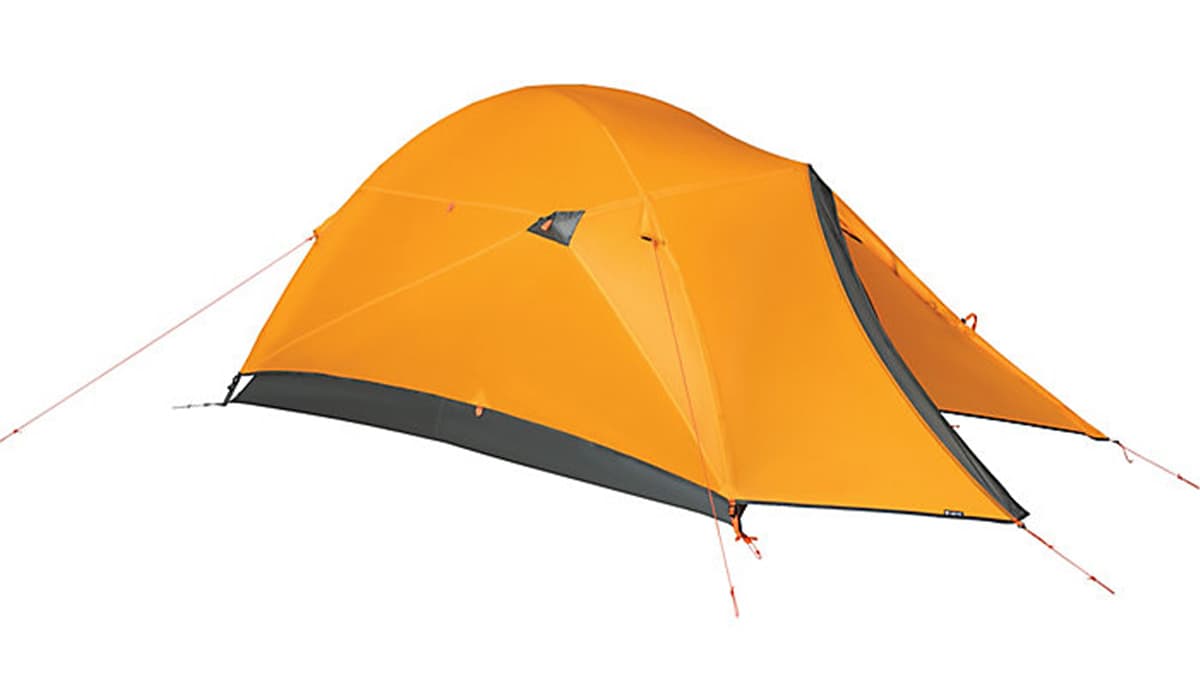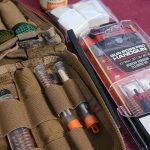Get Outside and Camp with the Best Tents for Your Adventures

1. Browning Big Horn - Big Tent Pick
This is a tent line we’ve had quite a bit of experience with. It’s a big tent with a divider that makes two rooms, perfect for when you want a room for your gear and one for sleeping. It has a tall, 7’3” center height, which is really nice for us taller types who don’t want to bend over all the time. This tent has 150 square feet of space and comes with fiberglass interlocking poles. The tent has two doors and six windows for ventilation. The rainfly is coated for UV resistance and waterproofing. We’ve used these tents for week-long family trips. They sleep up to 8 people and seem to hold up quite well to foul weather, and trust me – if you camp for a week, it’s bound to rain hard at least once.
Tip: Don’t try to assemble this tent by yourself. It is definitely a 2-person job.
2. The North Face Wawona - Four Person Pick
It’s been a few years since I was first exposed to tents from The North Face. I was struck right away by the quality of the components. That is what sets good tents apart from the bad ones. It’s easy to use quality nylon and other materials to make the shell of the tent quality, but the poles and other gear have to hold up. This compact 4-person tent from The North Face uses their new DAC MX pole, which adds strength to the pole yet keeps the weight down. The tent has a double-wall construction for durability, yet it allows for excellent airflow. Pockets on the sides and in the ceiling let you store gear, and there is a large vestibule for additional storage that is big enough, a person can sit there.
Tip: Great tent for a family backpacking adventure.
3. Cabela's Alaskan Guide - Editor's Pick
I’ll admit to being a little biased toward the Cabela’s Alaskan Guide series tents. At a former employer, we were allowed to use these tents whenever we went camping, and I’ve spent many night inside one. This included a few nights (and days) keeping my head down as a series of severe storms blasted me during a spring turkey hunt. The Alaskan Guide was developed to handle the most extreme weather and still keep you and your gear nice and cozy. It has a durable, 75D polyester ripstop rainfly with 2,000mm PU waterproof coating that keeps out rain and snow, regardless of how strong the wind is blowing it at you. The tent body is made from 210D polyester oxford for extreme durability and a bathtub-style floor that keeps water from seeping into your tent. You have additional protected storage and a protected entry with the integrated vestibule. There are vents to allow the tent to breathe, too, which helps reduce moisture buildup from morning condensation, or the above-mentioned poor weather. There are several sizes available, but I like the 8-man, just because I like the added space.
Tip: Thoroughly clean your tent and dry it before storage
4. Coleman Sundome - Budget Pick
Yeah, there are a few slightly less expensive tents out there, but for the few dollars difference, you might as well get a trusted brand, like Coleman. The Sundome series has been around forever. The latest version uses Coleman’s Weathertec nylon and welded seams for a dry and comfortable camping trip. It has a 6-foot center height and can be readily set up in a matter of minutes. The rainfly keeps you from getting wet when the skies open up and the design and components help the tent withstand up to 35mph winds. A port in the corner of the tent lets you run in a power cord to add additional comforts while you’re camping, too.
Tip: Adding a little CampDri helps make the tent last longer.
5. NEMO Kunai - Backpacking Pick
When you are a serious backpacker, space is premium, but you also don’t want to sacrifice quality. The Nemo Kunai is an amazing 4-season, 2-person backpack tent that weighs just 67 oz and takes up hardly any room in the pack. The tent has a full-coverage fly that sheds both rain and snow, and it blocks the wind, keeping you comfortable whether you’re trekking along the trails in the summer or winter months, and anywhere in between. It has a 20D Polyester Ripstop with No-See-Um mesh outer shell and the fly is made from 15D Sil/PeU Nylon 1,200mm Ripstop. The the floor material is 30D PeU Nylon Ripstop so you can rest easy that the elements won’t be coming through the floor to ruin your night. Lightweight and compact poles can handle whatever nature throws at you, too.
Tip: Sweep out dirt and rocks as often as possible, as these can harm any tent.
Vestibules explained
One common complaint we see about some tents is related to the vestibule, and that is usually because someone doesn’t quite understand how one is calculated into the tent’s capacity. A vestibule is the space between the outer door of the rainfly and the inner door of the tent. This is usually considered a protected place to store gear, boots and more that isn’t actually part of the tent’s floorspace. Some tents and manufacturers have vestibules that can be added to the tent for additional storage, too.
Vestibules are very important to four-season tents, as it gives you a place to store wet gear, boots, packs and more, that can otherwise take up valuable space inside the tent.
Tent seasons
When you see a tent rated as a four-season tent, you can expect a couple of things. The rainfly will extent all the way to the ground, and the tent structure can withstand the harsher winter conditions. You often pay a premium for a four-season tent, so consider that and how you plan to use your tent before you buy.
Other tents are considered a three-season tent, although you may not want to use some in early spring, or late fall, depending on where you are camping. These tents may not be as structurally built for harsher winds and weather, and the rainfly will not often extend to the ground.
Do I need to air out my tent?
Yes, definitely. Any use allows some amount of moisture to get trapped inside the tent, and moisture is the enemy of everything. Let it dry completely.
Do I need to spray my tent before I use it?
Yes, and no. Check your tent’s handbook to see if spraying an aftermarket silicon waterproofing agent, like CampDri, will damage your tent’s fabric. You used to have to to avoid waking up wet, but today’s fabrics are quite better.
We are committed to finding, researching, and recommending the best products. We earn commissions from purchases you make using the retail links in our product reviews. Learn more about how this works.











